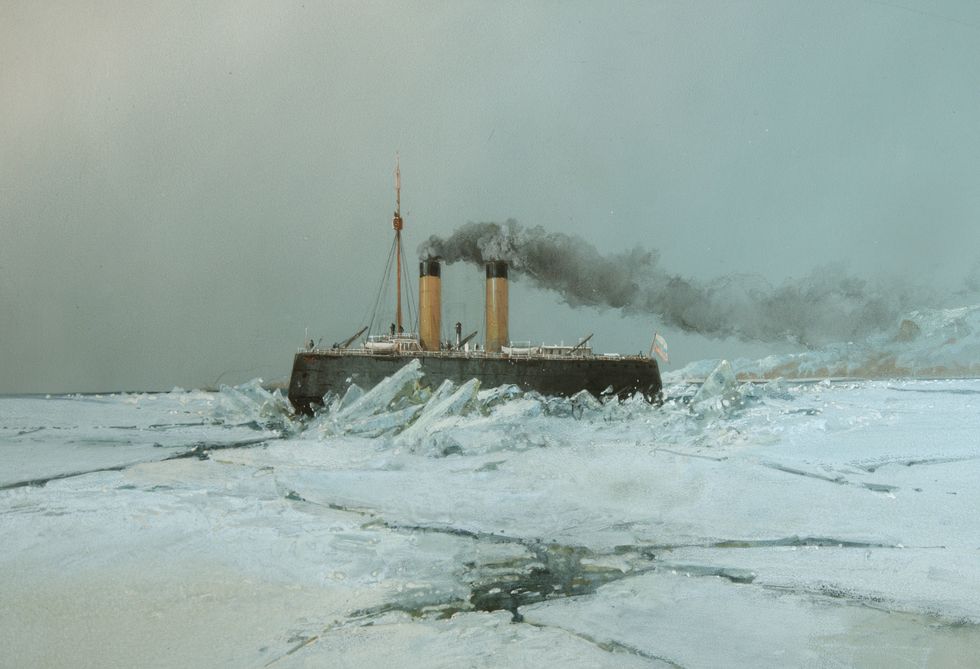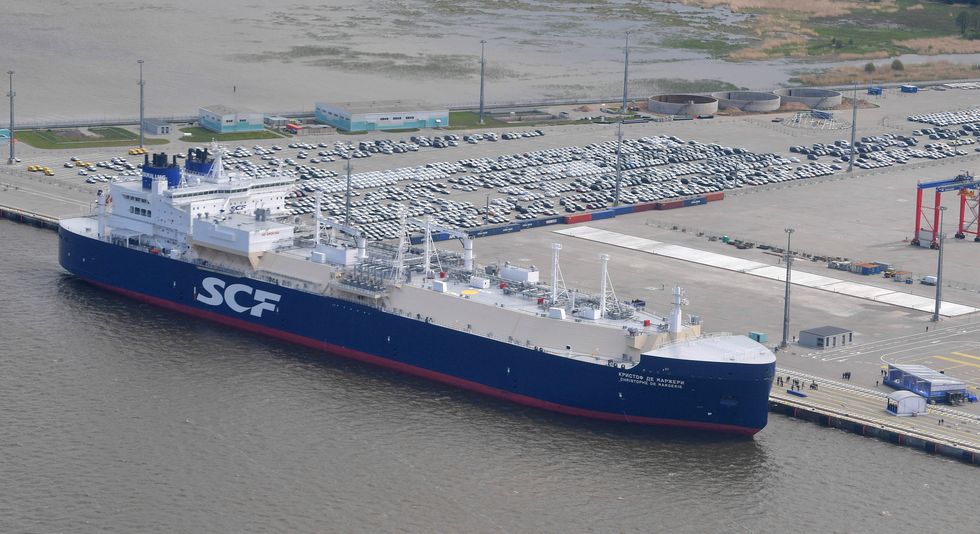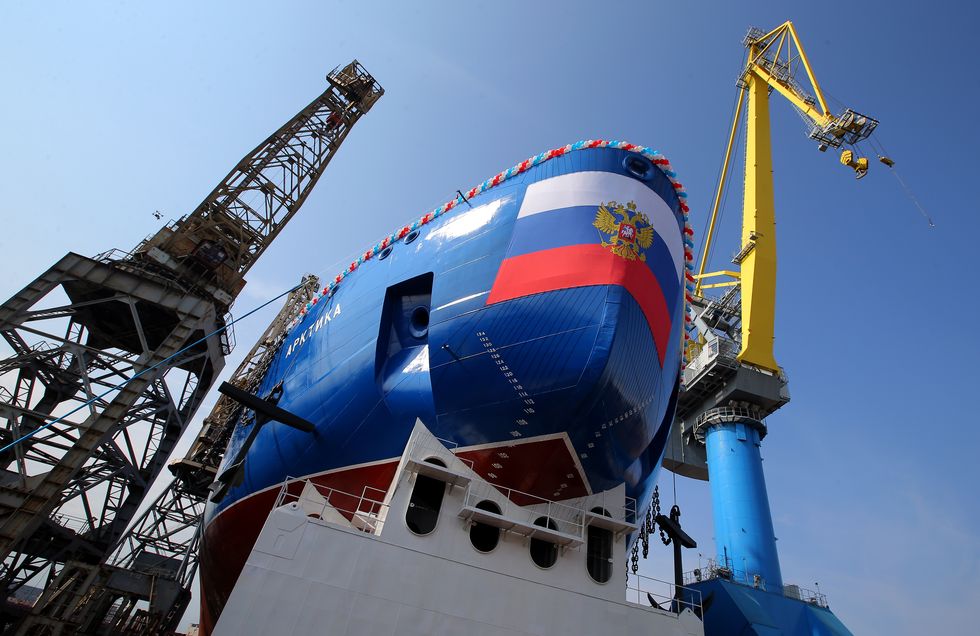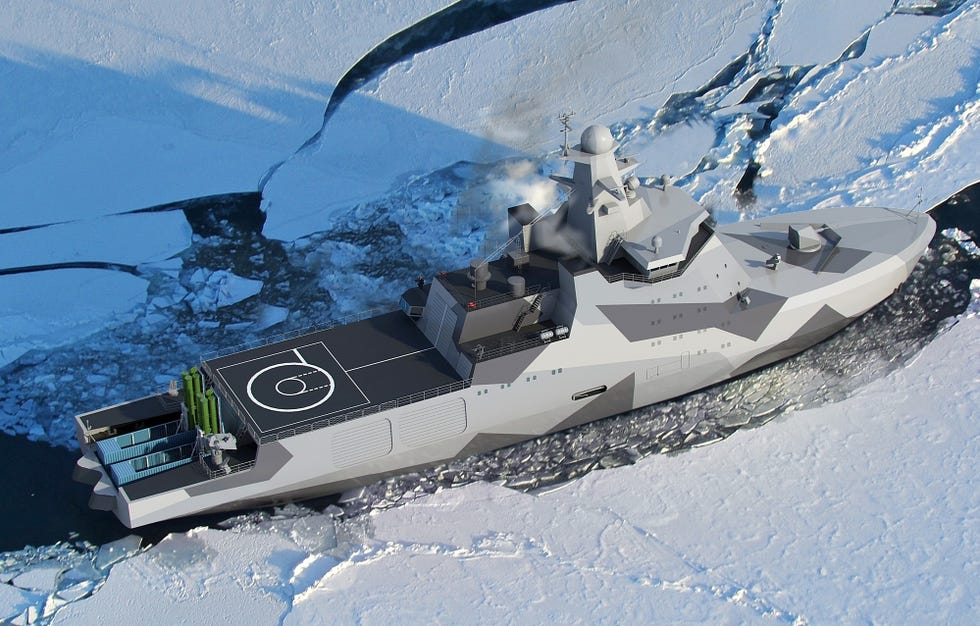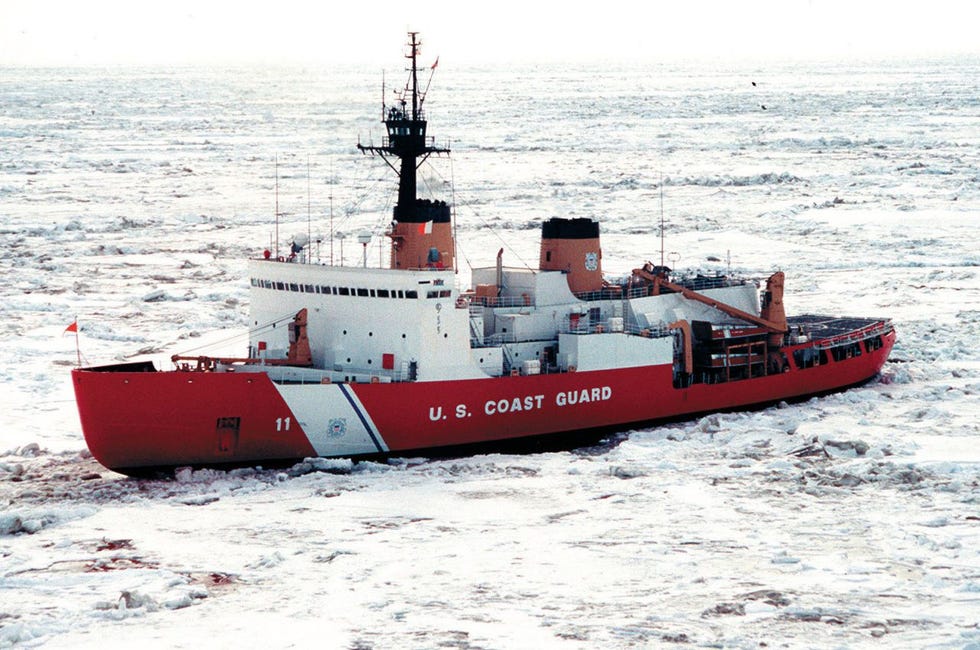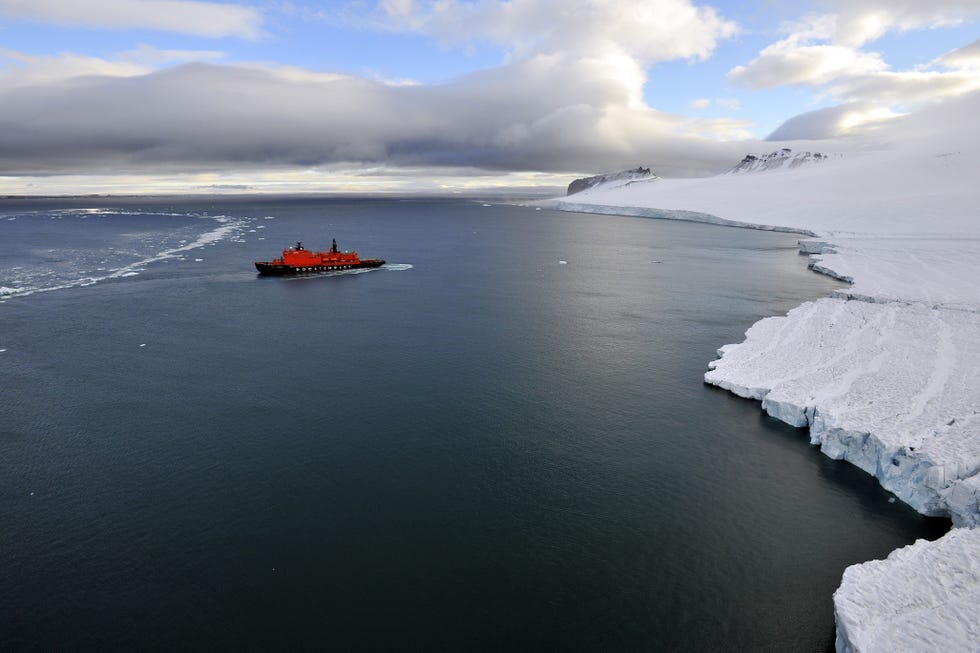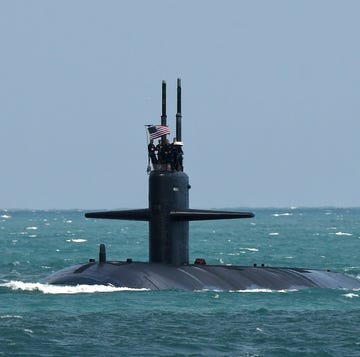The world is warming, and nowhere is this more evident than in the melting Arctic. As once-impassable sea ice becomes less formidable, countries are upgrading gargantuan icebreakers to make way for entirely new arteries for commerce—and war.
Shipping traffic along the Northern Sea Route shot up by 50 percent last year, to ten million tons. To take advantage, the Kremlin is building icebreakers like never before. Today Russia has 41 icebreakers with at least 8 more on the way. The current U.S. fleet has only two.
How will these future kings of the Arctic work, what will they do, and is the U.S. hopelessly left behind?
Breaking the Ice
Boats since medieval times have been built with reinforced hulls to survive in icy conditions, but it was the steam engine that made it possible for ships to break through ice. The first true icebreakers appeared at the end of the 19th century and their distinctive bow design remains to this day. Because here's the thing about icebreakers: They don’t just push forward. They also go upward.
“Icebreakers ride the bow up onto the ice sheet using the weight of the vessel to break the ice,” says Emma Lutton of U.S. Coast Guard Headquarters. “The propulsion plant must have enough power to propel the vessel onto the ice while maintaining the icebreaker’s forward momentum.”
Coast Guard icebreakers are designed to do this at a slow continuous speed of 3 knots (3.5 mph), aided by a spoon-shaped bow that helps them ride up on the ice. For example, the Coast Guard’s Polar Star can steam through six feet of ice this way. But when ice gets really extreme, these outfitted icebreakers must turn to equally extreme measures.
“In extreme ice conditions...an icebreaker will ‘back and ram’” Lutton says. "It is a slow, tedious process, but sometimes the only way to get to where you need to go. If there is thinner ice or a clear path nearby, the preferred method is...to go around it."
This is a slow, tedious process, with the vessel smashing through only a few feet with every attempt, but this technique can smash through ridges up to 21 feet thick.
Tough Tankers
For Russia, the Northern Sea Route is most importantly a slowly thawing shortcut for its Liquefied Natural Gas (LNG) exports to East Asia, especially China. The ships carrying LNG previously required an icebreaker escort, but the newest designs can actually break through ice on their own.
Launched in December 2016, the Christophe de Margerie was the first of 15 new Icebreaking LNG Carriers. Costing $320 million each, the thousand-foot-long ships weigh 128,000-tons and can eat their way through ice five feet thick at a steady 8 mph. They do it thanks to a hull reinforced with high-strength steel plates.
Because these tankers might encounter thick ice, the designers built them with a different type of bow. In heavy conditions the ship turns around and powers through seven feet of ice, steered from a second wheelhouse at the stern. This process creates more drag and is less efficient in open water, which is why it is not used all the time.
Instead of usual propellers, the ship is driven by three underwater Azipods, which provide thrust in any direction. Each Azipod delivers 20,000 horsepower, making these the most powerful LNG carriers ever built. Unlike propellers, these pods are designed to churn the water, reducing friction between the ship and the ice around it.
But even with such powerful machines, the passage is not entirely safe. “We should not underestimate the risks of traveling the Northern Sea Route,” says Sherri Goodman, Senior Fellow at the Woodrow Wilson International Center. “Safely navigating these waters takes skill. There are accidents waiting to happen, and they will.”
That’s why Russia is also supersizing its icebreakers to make reliable waterbound highways through Arctic ice.
When Icebreakers Go Nuclear
Russia owns the world’s largest icebreakers with the 25,000-ton nuclear-powered Arktika-class, which can power through nine feet of ice. The first of these was launched in 2016, now two are afloat with a third under construction. But even Arktika will be dwarfed by its in-development successor, a nuclear-powered monster called Project 10510, or "Lider-class," which is nearly twice as powerful.
Plans for these giants have been around since the early 2000s, but 15 years later, these ideas are becoming reality. Russia’s Industry and Trade Minister Denis Manturov announced last year that three Lider-class icebreakers will be built by 2024-25.
Lider will have around 147,000 horsepower, enough to smash through ice almost fifteen feet thick. The main benefit of the greater size is not the thickness of the ice it can break though, but the width of the channel it leaves in its wake. While the Artika-class leaves behind a 110-foot-wide channel, Lider will blaze a 200-foot-wide highway, which is big enough even for colossal 200,000-ton cargo ships.
The greater size also means that the Lider will crunch through thinner ice more rapidly. It will sail through ice eight feet thick at a brisk 12 mph, almost twice the speed of its little brother. And Russia will need all this power if they hope to make the Northern Sea Route a centerpiece of the country’s future fortunes.
“The Russians see the Northern Sea Route as a potential maritime toll road for them,” says Goodman. “It could be an enormous boon to the economy.”
If all goes according to plan, Russian officials expect traffic along the route to expand sevenfold by 2030, sucking trade away from the Suez Canal by creating an icy path to East Asia that’s 4,000 miles shorter.
A Different Kind of Cold War
But it won’t be just commercial vessels plying northern waters. Russia’s recent expansion of military power in the Arctic region includes numerous military installations and airbases as well as generous additions to Russia’s Northern Fleet.
Two prototype Ice-class patrol ships, or Ivan Papanin-Class, were commissioned in 2016. These ships will take three years to complete, but when they’re ready, they’ll patrol icy waters, transport “special equipment” (likely espionage gear), rescue other ships from ice, and provide general protection.
“Policing would be the charitable interpretation,” says Goodman, suggesting that the ships would allow Russia to control illicit trade or piracy. “It also allows them to assert some level of control and presence in the region.”
As well as a gun, the Ivan Papanin will carry sixteen cruise missile launchers targeting ships, submarines, or land installations. It’s lightly-armed for a ship its size—the similar-sized American Arleigh Burke-class destroyers pack over ninety cruise missile launchers—but the Ivan Papanin lugs around extra bulk with its icebreaking hull.
Meanwhile, America has its own issues with warships and ice. The brand new USS Little Rock was embarrassingly stuck in ice in Montreal harbor since late December 2017. The problem—a lack of available icebreakers—only highlights the shortfall in the American fleet. Polar Star is the U.S. Coast Guard only heavy breaker, and showing its age.
“The crew faced flooding and a constant nag of engineering problems on the 40-year-old heavy icebreaker, which at times slowed their progress and frustrated 150-person crew,” reported the Polar Star’s Facebook page, on an Antarctic resupply mission last month.
“As we have repeatedly stated in many reports, we have a requirement for a minimum of three new icebreakers, and preferably six,” says Goodman.
The Coast Guard Admiral Paul Zukunft also mentioned a target of six new breakers in his annual address. With only one ship funded so far, a big question has been who will pay for the billion-dollar ships, the Navy or the Coast Guard. Answering that question has taken at least 10 years.
A request for proposals for the new ship this month drew interest from five shipyards, and work should start to move forward. Though progress has stalled before, these new icebreaker will be vastly superior vessels like the 40-year-old Polar Star.
“Advances in hull shape and paint have increased icebreaker efficiency over the past few decades,” says Lutton. “Due to hull shape alone, the U.S. Coast Guard’s future heavy icebreaker will use a fraction of the power to break the same ice thickness as our existing ships.”
Lutton mentions an advanced power distribution system will make future icebreakers more resilient, and these ships will likely use podded propulsion like icebreaking tankers. Lutton calls this sort of rotating engine an “azimuthing propulsor.”
“In these systems, the propeller can turn up to 360 degrees eliminating the need for rudders and dramatically improving the maneuvering capabilities in ice,” says Lutton. “In the last twenty years, azimuthing propulsor design has progressed in size, robustness, and reliability.”
A new ship will go some way to addressing the America’s current shortfall, but Arctic operations will only expand in future years. As Lutton says, protecting national security, economic and environmental interests, and fulfilling international obligations will soon be missions for the U.S. Navy in the Arctic.
Now they just need a ship to get the job done.

